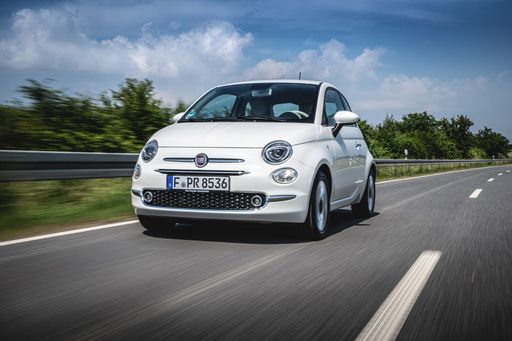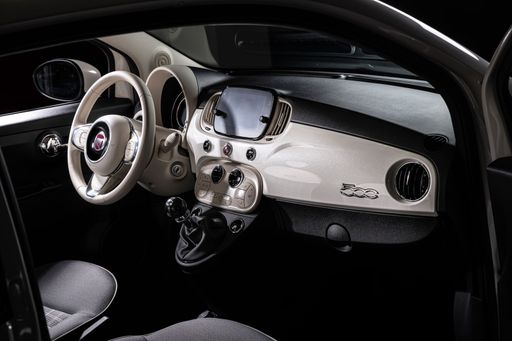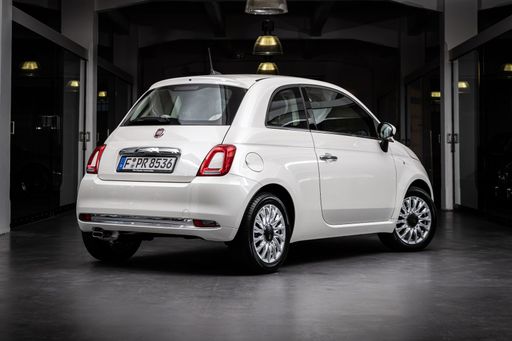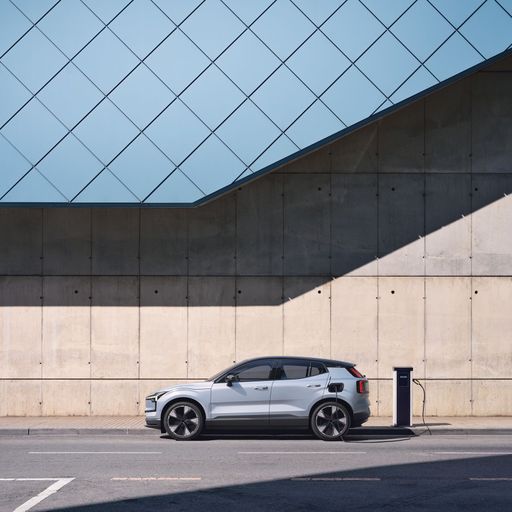Fiat 500 vs Volvo EX30 - Differences and prices compared
Costs and Efficiency:
Looking at overall running costs, both models reveal some interesting differences in everyday economy.
Fiat 500 has a convincingly advantage in terms of price – it starts at 18800 £, while the Volvo EX30 costs 33000 £. That’s a price difference of around 14143 £.
In terms of energy consumption, the advantage goes to the Fiat 500: with 13 kWh per 100 km, it’s distinct more efficient than the Volvo EX30 with 17 kWh. That’s a difference of about 4 kWh.
As for range, the Volvo EX30 performs evident better – achieving up to 476 km, about 145 km more than the Fiat 500.
Engine and Performance:
Power, torque and acceleration are the classic benchmarks for car enthusiasts – and here, some clear differences start to show.
When it comes to engine power, the Volvo EX30 has a convincingly edge – offering 428 HP compared to 118 HP. That’s roughly 310 HP more horsepower.
In acceleration from 0 to 100 km/h, the Volvo EX30 is clearly quicker – completing the sprint in 3.60 s, while the Fiat 500 takes 9 s. That’s about 5.40 s faster.
In terms of top speed, the Volvo EX30 performs to a small extent better – reaching 180 km/h, while the Fiat 500 tops out at 155 km/h. The difference is around 25 km/h.
There’s also a difference in torque: Volvo EX30 pulls significantly stronger with 543 Nm compared to 220 Nm. That’s about 323 Nm difference.
Space and Everyday Use:
Cabin size, boot volume and payload all play a role in everyday practicality. Here, comfort and flexibility make the difference.
Seats: Volvo EX30 offers to a small extent more seating capacity – 5 vs 4.
In curb weight, Fiat 500 is clearly lighter – 1141 kg compared to 1840 kg. The difference is around 699 kg.
In terms of boot space, the Volvo EX30 offers convincingly more room – 318 L compared to 185 L. That’s a difference of about 133 L.
In maximum load capacity, the Volvo EX30 performs clearly better – up to 1000 L, which is about 450 L more than the Fiat 500.
When it comes to payload, Volvo EX30 slightly takes the win – 390 kg compared to 325 kg. That’s a difference of about 65 kg.
Who comes out on top?
Overall, the Volvo EX30 shows itself to be is largely superior and secures the title of DriveDuel Champion.
It convinces with the more balanced overall package and proves to be the more versatile choice for everyday use.
 @ Volvo Cars
@ Volvo Cars
Volvo EX30
Costs and Consumption
View detailed analysis
Engine and Performance
View detailed analysis
Dimensions and Body
View detailed analysis
Fiat 500
The Fiat 500 is a cheeky, retro‑styled city car that turns heads with its iconic looks and playful personality. Perfect for weaving through tight streets and easing into tiny parking spots, it’s aimed at buyers who want style and character more than grand touring prowess.
details @ Fiat / Stellantis Media
@ Fiat / Stellantis Media
 @ Fiat / Stellantis Media
@ Fiat / Stellantis Media
 @ Fiat / Stellantis Media
@ Fiat / Stellantis Media
Volvo EX30
The Volvo EX30 arrives as a compact electric with crisp Scandinavian design and a cheeky personality, proving you can be serious about safety and still enjoy a grin on your commute. Its cabin is cleverly packaged and delightfully easy to live with, offering smart tech and practical touches that make it feel like a grown-up's city car with a sense of fun.
details @ Volvo Cars
@ Volvo Cars
 @ Volvo Cars
@ Volvo Cars
 @ Volvo Cars
@ Volvo Cars
 @ Volvo Cars
@ Volvo Cars
 @ Volvo Cars
@ Volvo Cars
 @ Fiat / Stellantis Media
@ Fiat / Stellantis Media
|
 @ Volvo Cars
@ Volvo Cars
|
|
|
|
Costs and Consumption |
|
|---|---|
|
Price
18800 - 30800 £
|
Price
33000 - 49100 £
|
|
Consumption L/100km
5.30 L
|
Consumption L/100km
-
|
|
Consumption kWh/100km
13 - 14.7 kWh
|
Consumption kWh/100km
17 - 18.7 kWh
|
|
Electric Range
190 - 331 km
|
Electric Range
339 - 476 km
|
|
Battery Capacity
21.3 - 37.3 kWh
|
Battery Capacity
49 - 65 kWh
|
|
co2
0 - 120 g/km
|
co2
0 g/km
|
|
Fuel tank capacity
-
|
Fuel tank capacity
-
|
Dimensions and Body |
|
|---|---|
|
Body Type
Hatchback
|
Body Type
SUV
|
|
Seats
4
|
Seats
5
|
|
Doors
3 - 4
|
Doors
5
|
|
Curb weight
1141 - 1475 kg
|
Curb weight
1840 - 1960 kg
|
|
Trunk capacity
183 - 185 L
|
Trunk capacity
318 L
|
|
Length
3631 - 3632 mm
|
Length
4233 mm
|
|
Width
1683 - 1684 mm
|
Width
1838 mm
|
|
Height
1527 - 1532 mm
|
Height
1550 - 1567 mm
|
|
Max trunk capacity
440 - 550 L
|
Max trunk capacity
1000 L
|
|
Payload
250 - 325 kg
|
Payload
370 - 390 kg
|
Engine and Performance |
|
|---|---|
|
Engine Type
Electric, Petrol MHEV
|
Engine Type
Electric
|
|
Transmission
Automatic, Manuel
|
Transmission
Automatic
|
|
Transmission Detail
Reduction Gearbox, Manual Gearbox
|
Transmission Detail
Reduction Gearbox
|
|
Drive Type
Front-Wheel Drive
|
Drive Type
Rear-Wheel Drive, All-Wheel Drive
|
|
Power HP
65 - 118 HP
|
Power HP
272 - 428 HP
|
|
Acceleration 0-100km/h
9 - 16.2 s
|
Acceleration 0-100km/h
3.6 - 5.7 s
|
|
Max Speed
135 - 155 km/h
|
Max Speed
180 km/h
|
|
Torque
220 Nm
|
Torque
343 - 543 Nm
|
|
Number of Cylinders
3
|
Number of Cylinders
-
|
|
Power kW
48 - 87 kW
|
Power kW
200 - 315 kW
|
|
Engine capacity
999 cm3
|
Engine capacity
-
|
General |
|
|---|---|
|
Model Year
2023 - 2025
|
Model Year
2024 - 2025
|
|
CO2 Efficiency Class
A, D
|
CO2 Efficiency Class
A
|
|
Brand
Fiat
|
Brand
Volvo
|
What drivetrain options does the Fiat 500 have?
The Fiat 500 is offered with Front-Wheel Drive.
The prices and data displayed are estimates based on German list prices and may vary by country. This information is not legally binding.
